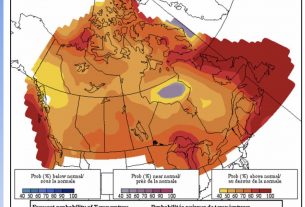**** Via NOVA SCOTIA LIFEGUARD SERVICE
Beach Safety – Currents, Tides, Waves
Currents

Movement of the water coming on to the beach from waves cause certain on-shore currents commonly known as rip currents (sometimes referred to as “rip-tides”, “undertow”, “wash” or “run out”). Rip currents are mainly caused by an outward flow of water that is returning to the sea which form by waves washing up on shore. After washing on shore, gravity forces the water to return to sea. Depending on the force of the wave, beach conditions and location of sandbars under the surface, the water that is returning to sea may accumulate in one concentrated area, causing a strong current at an isolated zone of the beach. The larger the waves washing up, the stronger and more dangerous the rip currents will be. Rip currents can stay in the same place for long periods of time (6 months to a year), travel along the length of the beach, or suddenly open at any time or location along the beach. Here are some signs to help you distinguish a rip current:
- waves breaking further out on either side of the rip
- discolored water caused by the turning up of the sand
- rippled appearance where the water is calm
How to Escape from a Rip Current
- DON’T PANIC
- poor/ tired swimmers should swim parallel to shore approximately. 30 meters then return to shore
- strong swimmers should swin at a 45 degree angle across the rip in the same direction as the side/latteral current
- if the current is too strong for you and you require assistance from a lifeguard raise one of your arms straight directly above your head.
Red and Yellow Flags
Any of the Provincial beaches which are supervised by the Nova Scotia Lifeguard Service (NSLS) use internationally recognized lifesaving flag system. The red and yellow flags are used to identify to the public the safest location on the beach to swim. The NSLS does many rescues each year with the majority of the rescues occurring outside the flagged area.
What makes the flagged area the safest?
- The flagged area is always supervised by a professional trained lifeguard (10 – 6pm) during the summer months.
- Lifeguards set up the flags in the least dangerous area on the beach where no rips or other hazards are present.
- The public need not worry about passing jetskiers, seadooers, surfers, and kyackers as such craft are not permitted to travel between the red and yellow flags.
Tides
Tides have a large influence on currents around beaches as well. Generally the seas reach their highest level on shore twice a day. The average interval between 2 successive tides is 12 hours and 25 min. As the tide drops there are many salt water lagoons that will empty out to stay level with the ocean which in turn cause tidal rips. As the tide runs out the large amounts of water that was brought into the lagoons must return to the sea which causes currents to flow like rivers. As the tide ebbs, this causes the same effect as the water rushes in to fill the lagoons. An example of this would be the channel at Rainbow Haven Beach and Mira Gut Beach.
Surf Awareness
Surf or waves are formed by winds blowing over the ocean generally caused by storms at sea. There are three factors that affect the size of the waves;
- the strength of the wind
- the length of time which the wind blows
- the distance over which the wind blows (fetch)
When waves approach the shore, they approach in a group of waves called “SETS.” Sets are swells that are produced by storms at sea and travel across the ocean. These sets are larger than your average waves produced by a storm. The number of waves produced in sets and lulls between are consistent for a given swell but varies between swells. As the waves approach shore two things happen. First, the wave slows due to the friction with the ocean bottom. Second, the wave raises (wave height increases) and eventually breaks when the water is shallow enough.
There are four different types of waves:
Dumpers or Plunging Waves
These waves occur when waves encounter and abrupt change in depth (from deep to very shallow) and break with immense force. These usually occur at low tide when there’s less water for the wave to break into or at beaches where the slope of the beach is steep. They can easily slam swimmers to the bottom (sand, rocks, coral…etc).
Spilling or Rolling Waves
These waves occur when the change from deep to shallow is more gradual. When these waves break, the wave peaks and the water spills down the face of the wave, along the length of the beach. Although less intense than the “dumpers” they are still powerful and can knock swimmers over and knock them under the surface.
Surging Waves
Surging waves may not actually break as they approach shore, but simply surge up onto the beach/rocks and then quickly flow back out to sea. They can be particularly dangerous to young/infant swimmers because they can knock them off their feet and wash them out to deep water.
Rogue Waves
Although under certain circumstances abnormally large waves, called episodic waves of 100 feet plus, can occur; the concept of rogue waves is widely misused and misunderstood. Most of us will never see a episodic wave, such as a tsunami, as they only occur in certain areas and under rare conditions. What the public normally mistakes as a rogue wave are simply a large set of waves in a swell. Swimmers or anyone walking near the shore must always remember that the size of the next wave is unpredictable.
Peak Danger Times
In Nova Scotia generally the seasons with the highest surf are late summer/fall (atlantic hurricane season) and the winter. During these periods intense storms in the atlantic create dangerous surf conditions as they meet our shores. This is especially important this year due to the number of beginners brought into the sport of surfing. Everyone should take special precautions during these times as there is limited supervision on the beaches.
Shark Safety
White Shark Information (Supplied by Ocean Tracking Network https://oceantrackingnetwork.org/)
The white shark (Carcharodon carcharias) is a migratory apex predator that has historically occupied Canadian waters between summer to autumn. This species overwinters in warm areas of the Gulf of Mexico and the southern coast of the United States, before migrating to Canada to feed in areas as far north as the Gulf of St. Lawrence. Young white sharks primarily eat fish, while older animals include marine mammals in their diet (e.g. seals).
Bycatch of Northwest Atlantic white sharks in fisheries targeting other species reduced the animals’ numbers. By the 1980s, the population had severely declined and reported sightings of white sharks became rare in Atlantic Canada. The species was eventually listed as endangered in Canada.
Conservation measures for white sharks started being implemented in the 1990s and it appears that the population may be reboundung and reoccupying much of its historic range in Canada, which could increase the probability of encounters between people and white sharks.
Like the other large predators that Canadians share the natural environment with (e.g. bears, coyotes and cougars), we want to respect white and remeber that we are “guest” in their home – the ocean.
While it is unlikely that you will encounter a white shark at one of Nova Scotia’s public beaches, you can help reduce your risk of having a negative interaction by following a few practical:
Reducing Risk For the Public:
- In the same way you would be cautious about going for a walk in the woods where there might be bears, cougars, wolves, coyotes or moose, be cautious when swimmming in areas where sharks occurs. Be aware of your surroundings – put on your situational awareness glasses!
- Swim in places where the water is not murky.
- Swim in groups if you can, and where there are other people in the vicinity.
- Stay away from seals – a prey species for sharks – and areas of high marine life activity (e.g. where there are schools of fish or birds).
- Avoid swimming at dawn, dusk or at night as this is when sharks tend to feed and are more active.
- Avoid sudden drop-off areas. Sharks like to hide deep and attack towards the surface.
- Don’t wear shiny or reflective jewelry and avoid high-contrast colour patterns and flashy metallic jewelry; sharks see in shades of grey, and anything that has high contrast could make them curious.
- Don’t go into the water if you’re injured and bleeding.
- Don’t splash around, as the shark may interpret the commotion as a signal of prey in distress.
- If you encounter a shark, don’t fail your body or show other signs of panic. You should maintain eye contact with the shark while moving backward to get out of the water. If you can, put something between you and the shark (surfboard, stick, camera, etc.).




